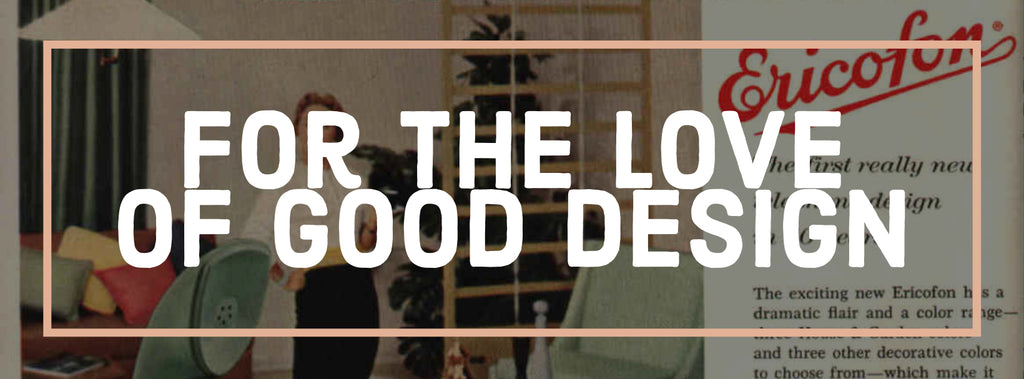I recently had a conversation with some sixth-graders. They wanted to know, “What do you call those phones that plug into walls?” I was confused. “Phones,” I replied. They emphatically disagreed. After further discussion amongst themselves, they remembered the answer: “Tele-phones!” they shouted. Laughing, I told them that “phone” and “telephone” are the same thing. They told me I was wrong! And of course I was; when you are 12, you are always right.
This story, both true and entertaining, speaks to how quickly communication technologies have changed in a mere generation or two. If we think back to the 1950s, when the houses on Graymoor Lane in Olympia Fields, IL were brand new, when post-War dreams of peace were leading to economic prosperity, we would see beautiful Bakelite phones on delicate Eames tables. The old metal and wall-mount monstrosities were being replaced by objects as beautiful and modern as they were functional. These new, affordable telephones were visible evidence of the progress of technology, design, and modern ideals in the middle-class home.

1931 DHB 1001 by Jean Heiberg for L. M. Ericsson
The Modern Ideal
One of the remarkable aspects of the Modern design movement is the attention artists gave to the entire modern experience. Everyday objects like forks, linens, footrests, and candelabras fit into the overall design scheme of the home. Fashion trends in textiles and jewelry echoed the sleek modern forms and organic inspirations of the age. From what you wore to where you wore it, the mid-century woman was intimately connected to and immersed in Modern taste.
Turning Function into Form
It may perhaps be surprising today to think that the humble telephone was the object of Modernist attention, but in the decade following World War II, the percentage of American households with at least one telephone skyrocketed from roughly 40% to over 60%. Designers imagined a range of innovative and exciting models to grace the stylish mid-century home. The used new materials and new organic visions to channel the spirit of the age.
The L. M. Ericsson Company in Stockholm, for example, had invented the cradle telephone, but when they commissioned the German Modernist Jean Heiberg to make it marketable for a modern audience, he turned to a new material, Bakelite, to imbue the telephone with style. Heiberg’s DHB 1001 Bakelite phone was one of the first, mass-produced telephones in the world, and would go on to inspire communication design for decades.
Less common, perhaps, but certainly more collectible today, is the unique Ericofon, the first and most-popular one-piece telephone. It’s hard to image how we got from the Ericofon to the iPhone, but certainly, this innovative design is the ancestor of today’s handheld devices.
Courtesy of ericofon.com
New Style, New Material, New You
Enamels, plastics, and mixed media designs were popular in all aspects of mid-century life. The post-war boom meant that artists had the time to experiment and buyers had the money to enjoy those designs. This was the era of Grace Kelly and Doris Day, on whose necks pearls transitioned from Classic to Modern. Atomic-age starbursts and organic repetition became the hallmark of style. In daily life, women wore bold, geometric pins, rings, and earrings that mixed new materials like Bakelite with gold, silver, and diamonds.
Mid-century Pearl and Diamond Ring, belladora.com
Streamlining Design
Another aspect of the Mid-Century modern spirit was the idea of “streamlining” design. You might think of the fins on a 1950s Chevy or the bold curvature of a Sears Catalog kitchen set. In 1965, a former costume and set designer for Macy’s conceived of a new telephone that reduced sweeping, dramatic forms into a simple, modern style. Henry Dreyfuss’ Trimline phone became an instant household classic, both for its clean lines and its ease of use.
Courtesy of Cooper Hewitt, Smithsonian Design Museum
At Graymoor Lane, our Juniper Collection channels this streamlined approach to good design. The elongated curves and mixed media pieces embody the spirit of the age. From tabletops to jewelry boxes, the best mid-century designers could make any moment stylish and we know our collections communicate that same style and grace for every modern woman.






Leave a comment